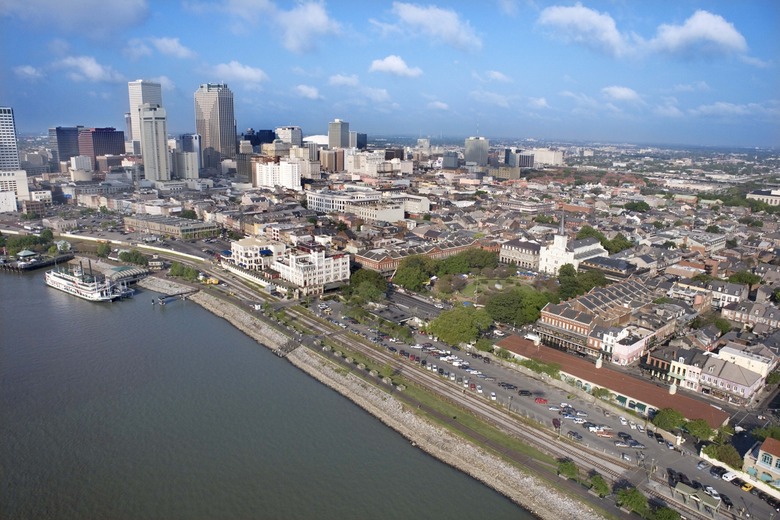What Are Some Examples Of A Coastal Plain?
Coastal plains form significant terrain connecting large bodies of water with inland regions. Some of the better known examples of plains include the Atlantic and Gulf coastal plains of North America and the inland coastal plain of Israel and the Mediterranean Sea. These sprawling geographic regions are highly populated and have important social and economic functions in addition to their geography.
Coastal Plains
Coastal Plains
Coastal plains are relatively flat low-lying areas sandwiched between a body of water, usually an ocean, and hills or mountains. There are two forms of coastal plains. A continental shelf may lie below sea level and become exposed when sea levels fall. Or streams such as rivers may deposit soil and rock at their mouths, where they enter an ocean or sea. These sediments build up over time, creating low-lying flat areas slightly above sea level. The inland boundary of a coastal plain is called a fall line. It occurs when water erodes softer sedimentary rock of the coastal plain and creates falls or rapids at the fall line.
Atlantic Coastal Plain
Atlantic Coastal Plain
The two great coastal plains of North America are the Atlantic and the Gulf plains. The Atlantic Coastal Plain is the exposed portion of the continental shelf, which extends from the southern edge of New York south to the southern edge of Florida. The shelf slopes toward the ocean and extends inland approximately 80 to 120 kilometers (50 to 75 miles), where it abruptly ends at the fall line. In Virginia, the plain is about 60 meters (200 feet) above sea level at the fall line and slopes to sea level at the tidal zone along the coast. The Atlantic Coastal Plain is largely forested and is an important region for lumber and fishing.
Gulf Coastal Plain
Gulf Coastal Plain
The Gulf Coastal Plain is connected to the Atlantic plain at the southern tip of Florida. It extends westward across the southern United States along the western side of Florida and coastal areas of southern Alabama, Mississippi, Louisiana and Texas. It then extends southward and eastward along the eastern margin of Mexico. The fall line of the Gulf Coastal Plain in the southern states forms its northern boundary, but it differs from the Atlantic plain in that the Gulf fall line is not always so distinct. The Gulf plain is formed by sediment deposits from inland rivers. Like its Atlantic counterpart, it includes important lumber and fishing industries, as well as large cities like New Orleans and Houston.
Israel Coastal Plain
Israel Coastal Plain
Most coast examples are along ocean margins, but they can also be located inland along large bodies of water. The coastal plain of Israel borders the Mediterranean Sea, and it is agriculturally the most productive region in the country. It is also home to more than half of Israel's population. Israel's coastal plain extends inland for approximately 40 kilometers (25 miles) and is composed of low-lying sandy soils. The northern portion of the plain, the Galilee Plain, is a fertile region home to much of Israel's agriculture. The more southerly regions of the plain include the large cities of Haifa and Tel Aviv.
Cite This Article
MLA
Peterson, John. "What Are Some Examples Of A Coastal Plain?" sciencing.com, https://www.sciencing.com/examples-coastal-plain-23835/. 20 July 2018.
APA
Peterson, John. (2018, July 20). What Are Some Examples Of A Coastal Plain?. sciencing.com. Retrieved from https://www.sciencing.com/examples-coastal-plain-23835/
Chicago
Peterson, John. What Are Some Examples Of A Coastal Plain? last modified March 24, 2022. https://www.sciencing.com/examples-coastal-plain-23835/
